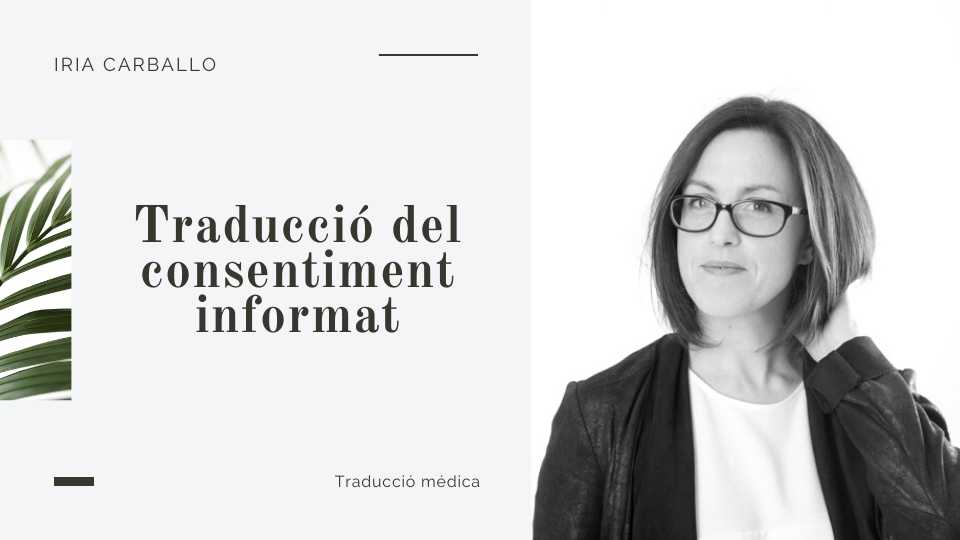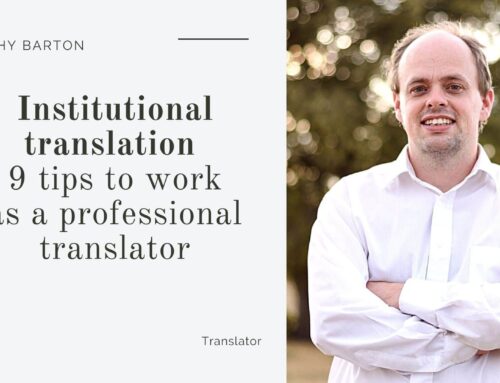We know that it is important for information to be communicated accurately and securely, but in the health sector, we need to be even more careful than usual.
We live in a time where medical and health communication is being transformed. In recent years, there has been a shift towards empowering patients. Access to information is getting easier and faster. This transition requires changes in the style of the texts so that patients with limited knowledge of medical terminology understand what they are signing and accepting. This makes communication between medical professionals and patients more effective.
Informed consent plays a key role in this. This article will briefly review what informed consent is and the difficulties that its translation entails.
What is informed consent?
Informed consent is a document for those who are going to participate both in general healthcare procedures and in clinical research. It can be of variable lengths, but to give you an idea, an informed consent document for participation in a clinical trial will normally be about 10-25 pages. It consists of two parts: patient information and the informed consent form (IC) itself.
The document informs the patient about:
- the nature of the operation or procedure that is taking place
- the objectives
- the benefits that can be expected
- the possible risks or side effects
In signing it, the patient confirms that they have been informed of the process that is going to take place and that they have a full understanding of its implications.
Do informed consent documents need to be translated?
Yes. In Spain, according to the Royal Decree 223/2004 of 6 February, the consent (and the information form) “shall contain only relevant information, expressed in clear and understandable terms to the subjects, and shall be written in the subject’s own language”.
The term “own language” may be a little ambiguous and we could certainly debate it in a country like Spain, which has three co-official languages with a significant percentage of its population being immigrants.
Linguistic diatribes aside, it is clear that informed consent forms are sensitive documents. Before signing it, a patient should understand the text completely, which is why it must be written in a language that the patient can understand clearly and without difficulty.
Who translates informed consent documents?
Translating health documentation implies a need to know the specialised terminology and its standard structure. Trusting the translation of informed consent documents to someone who is not familiar with these points is a mistake. They must be translated by professional translators who know how to overcome and adapt possible cultural differences between languages. These translators also need to be specialists in the medical and legal terminology that is used in these types of documents.
As well as that, to guarantee the highest quality, it is essential that a professional handles the final revision of the text.
What are the difficulties when translating informed consent documents?
The most difficult part of translating informed consent documents is making the text understandable to those who are going to read it.
It may seem obvious, but this is a document that is not written for healthcare professionals or researchers, but rather for patients. That being said, it includes complicated topics including the medical factors previously discussed, as well as certain legal requirements.
The document has to transmit technical information to an audience that may lack technical or scientific knowledge, and that may not be in the best condition for reading or understanding a document that may have otherwise been understood in other circumstances. It is also possible that the patient cannot read the document, and a relative or legal representative will have to read it and make decisions on behalf of the patient. We should be aware of all these aspects and consider them when it comes to dealing with these types of translations.
Four basic rules for the translation of informed consent documents
To ensure that the information is conveyed accurately and without any ambiguities that could result in serious consequences, the translator should:
- Use short and direct sentences. They may need to summarise or rewrite the text to make it easier to understand.
- Adapt the terminology, substitute very specialised terms for simple explanations, and use clear language without gratuitous elements.
- Avoid using acronyms, symbols, or abbreviations.
- Eliminate redundancies.
How to write an informed consent document could be debated for some time, but we can all agree that a document this important should only be translated by specialised professionals.
As a summary:
- Informed consent forms are aimed at readers who do not have specific knowledge of medicine or science.
- It must include information about the health procedure and the consent form, which will be signed by the patient once he has received and understood the information.
- It must be written in the patient’s own language.
- Its translation should be handled by professional translators who are specialised in the health sector.
[maxbutton id=”14″ ]





Leave A Comment